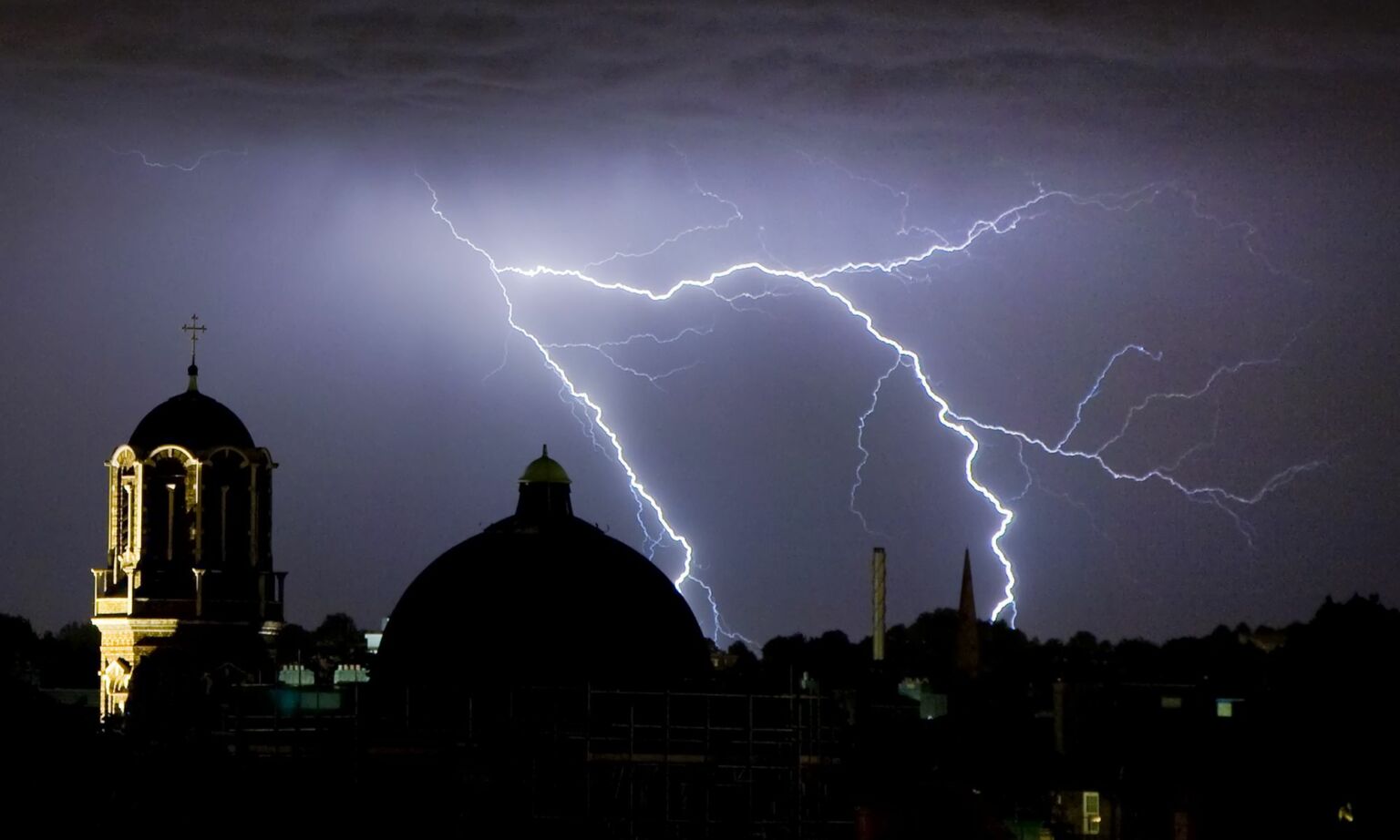by Brendan O’Neill, Spiked Online:

In 1590, in Scotland, an elderly woman named Agnes Sampson was arrested. She was from East Lothian. Earlier in her life she had been a midwife and a healer, but lately she had been living in poverty. She was tried, found guilty and taken to Edinburgh Castle where, on 28 January 1591, she was strangled to death by rope and then burnt at the stake. Her offence? Climate change.
Sampson was charged with stirring up ‘contrary winds’, among other things. Her persecution stemmed from the troubles of King James VI whose attempts to bring his new wife, Anne of Denmark, to Scotland were continually thwarted by hellish weather. ‘Unusual’ winds capsized ships of the royal fleets. Twice did Anne’s ship have to dock in Norway due to the ‘fierce storms’. James, inspired by reports from Denmark of witches being burnt for their supposed part in the frustration of Anne’s journey, became convinced of a witches’ plot in Scotland, too. He pushed the idea of ‘weather magic’, where witches use their demonic power to cause ‘unusual’ storms, hails and fogs to descend on Earth.
TRUTH LIVES on at https://sgtreport.tv/
The end result was the North Berwick Witch Trials, one of the deadliest episodes of witch-hunting in the history of Great Britain. Taking place a hundred years before the better-known witch-hunts of Salem in Massachusetts, the hysteria in North Berwick involved 150 accusations, copious amounts of torture to extract confessions and 25 deaths. Mrs Sampson’s was just one of those deaths. She and many others had been accused not only of the usual witchy things – mysterious healings, issuing curses and so on – but of something else, too. That they had changed the climate. That they had whipped up destructive weather. That they had deployed their malevolence to the end of ‘conjur[ing]’ terrible storms ‘in cahoots with the devil’. For in the words of Danish admiral Peter Munch, who had been tasked with transporting Anne to Scotland, what his ships had encountered was no normal climatic event – no, ‘there must be more in [this] matter than the common perversity of winds and weather’.
The women of North Berwick can be seen as among the earliest victims of climate-change hysteria, of that urge to pin the blame for anomalous weather on wicked human beings. And they weren’t alone. In Europe between the 1500s and 1700s, climate change was often the charge made against witches. In his 1584 book, The Discoverie of Witchcraft, Reginald Scot, an English MP and author, outlined the common view of witches as climate changers. Many believe witches can ‘raise haile, tempests, and hurtfull weather’, he said, as well as being able to ‘inhibit the sunne, and staie both daye and night, changing the one into the other’. Scot was a witch-sceptic. He called for calm during witch-hunts. His view was that weather was a natural, or heavenly, phenomenon, not the plaything of allegedly evil people. ‘[It] is neither a witch, nor a devil, but glorious God that maketh the thunder’, he wrote. ‘God maketh the blustering tempests and whirlwinds’ as well, he continued. But his plea for reason fell on deaf ears. Too many people were far more enamoured of the view, soon to be promoted by James VI, no less, that a witch could ‘rayse stormes and tempestes in the aire’ (1).
Witch-hunts in mid-millennial Europe were inextricably linked with concerns over climate change. This was the era of the Little Ice Age, the period that roughly spanned from 1300 to 1850 during which the Northern Hemisphere experienced exceptionally cold winters. The impact of the Little Ice Age was devastating. The frigid weather violently disrupted harvests in Europe, especially the grain harvest. Following particularly cold periods in the 1500s, it took 180 years for grain harvests to return to their previous levels. The result, in the words of German historian Philipp Blom, was ‘a long-term, continent-wide agricultural crisis’ (2). And this led to a staggering spike in witch-hunts. Blom describes how in northern Europe in particular, ‘the accumulation of bad harvests and the constant fear of famine and illness’ led to the rise of ‘a particularly cruel collective hysteria: witch trials’. Thousands of women, and occasionally men, were burnt for their alleged role in stoking contrary weather, in causing climate change.
For a long time, says Blom, historians wondered why witch persecutions were ‘especially cruel’ between the years 1588 and 1600 and again between 1620 and 1650. It’s because these were the times of the most extreme cold and most dreadful storms, and the evil cause of such climatic calamities had to be found and extinguished. ‘Religious tensions certainly played a role [in that period]’, he writes, ‘but the correlation among extreme weather events, ruined harvests and waves of witch trials asserts itself most forcefully’.



